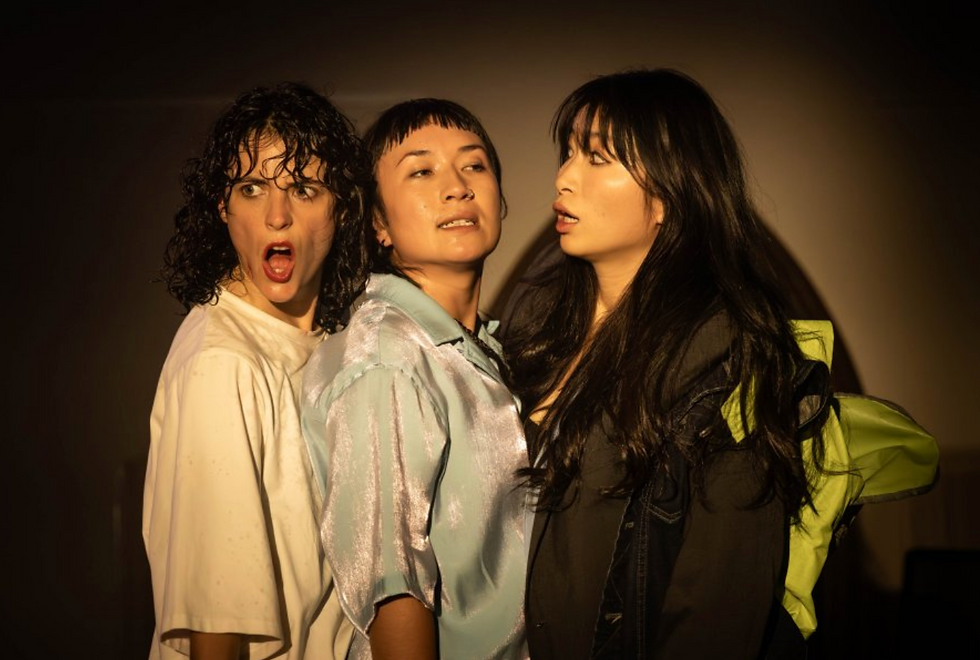Review: Sense of Place at Dancehouse
- Theatre Travels

- Aug 18, 2023
- 3 min read
Review by Thomas Gregory
Part of any theatregoing experience I’ve had includes a personal recognition of my sense of place. I’m not just talking about the setting of the play, whether elaborately captured by the set design or more-often represented with visual symbols or elementary soundscapes. It’s also the staging choices, lighting and sound cues, and even sometimes the choice of venue for the production. Admittedly, even if I don’t want it to, my experience is affected by the world outside of the production - is it cold, hot, rainy? Is the performance out of my way or conveniently positioned for my night out? Thinking wider, I cannot help but recognise that seeing plays in Melbourne is different to my hometown, and the fact we experience art on a land spiritually connected to a people for tens of thousands of years should not be ignored.
While these aspects of theatre are there, I’ve rarely thought about them until now.
Weave Movement Theatre’s production of Sense of Place begs us to reflect on the difference between space and place and how our relationship with the world around us has a major impact on our experiences. Yes, this theatre piece explores what it is to feel at home, isolated, or lost. It goes deeper still, though, exploring how the sounds and shadows we experience in a place affect our mood, how the power of mindfulness can give us new perspectives, and how our experience of places is touched by history - not just our own but that of all those who came before us.
Weave Movement Theatre (WMT) describes itself as a company hoping to make “inclusive practices to become the norm, [and] set the standards for accessible practices, and advocate for disabled artists to have equal opportunities.” It is as much a training ground to encourage people with disabilities to explore performance art as it is a company dedicated to putting on performances, and one might expect, as a new audience member, that their shows will have that air of graduating students showing what they have learned. With WMT, this is far from the case. The performers of Sense of Place are far more experienced than your ordinary artist, and the production is of the highest standard you will find in Melbourne. The play incorporates physical theatre, mime, and multimedia interaction, as well as conventional monologues and scenes. With a series of scenes built on the theme of place rather than an ongoing narrative, each performer is given a place to shine. While no cast member was forgettable, it is worth giving special mention to Emma Norton’s interpretative dance and a moving monologue by Greg Muir, both of which will sit with me far into the future.
Beyond the more traditional “performance skills” of the cast, however, is where the true enjoyment of the night lies. Sense of Place is truly a piece of sensory theatre, and while one could not call it interactive, the experience of the audience is far from that of an outsider.
It starts before the show technically does as, walking to their seats, the audience can smell something earthy and warm. On the stage floor, we can see dried leaves spread out over the black, and somewhere above us, speakers are replaying interviews over a soundscape of flowing water. We are definitely in a place rather than a space. After a guided mindfulness exercise, the show starts - the crunching of feet and wheels over the dried leaves, the movement of bodies about the stage, and lights throwing shadows in different directions.
While our senses are never assailed, they are always engaged - our minds are never overwhelmed but are always challenged. Lisa Greenaway and Brad Vaughan (the sound and lighting designers respectively) should be awarded for creating an ever-evolving place for performance that compliments the cast rather than overshadows them.
I’d rather not say too much about the writing of this work beyond to say how entertaining and challenging it was. There is truly something for everyone, with references to Shelley, personal stories of tragedy and history, quite absurdist physical comedy, and the use of technology as story (rather than simply the media with which to tell the story). While one could argue that the structure of the production could be tighter, with some of the more compelling scenes more carefully placed within the whole, it truly is a pedant who could hold it against them.
Weave Movement Theatre has put on something special with Sense of Place, and it really should not be missed. I can only hope that other theatre practitioners take note of how holistic our art can be when engaging with audiences and challenge themselves to see how much better fully-inclusive theatre can be for our art.

Image Supplied




